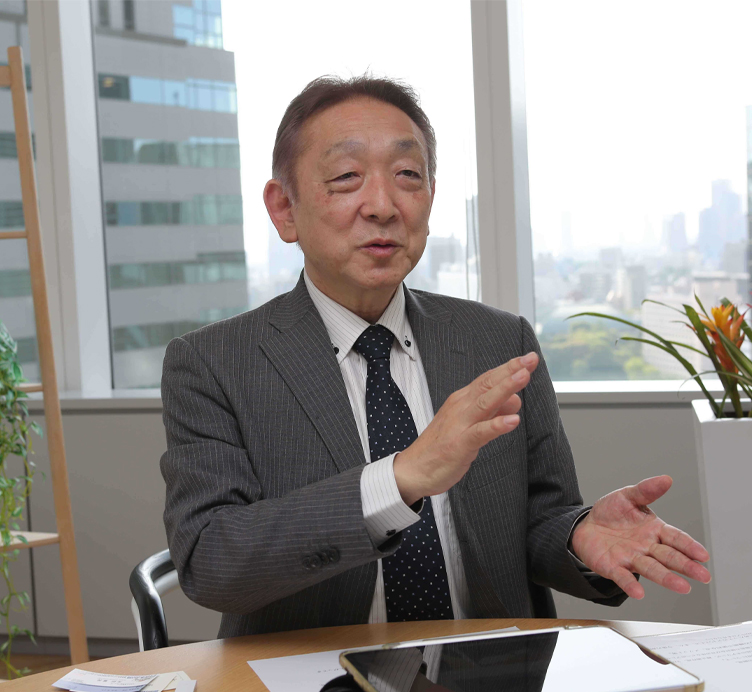Mr. Torita first used Shade3D more than 20 years ago, when he was modelling his house and thinking about the exterior design in his spare time.
Based on this experience, while he was working on new product development at Toyota Motor East Japan Inc., he thought of introducing Shade3D to visualize ideas. For example, in the development of a robotic personal mobility/electric wheelchair, he planned the new product himself, handling everything from circuit and board design for electrical systems, software creation for OS, language, control, image recognition, etc., to mechanical design for motors, gears, lenses, suspension, etc. First, he used Shade3D to create CG models based on the designs. He then created the prototypes, using paper mock-ups and Shade3D to check movements, and then delivered the final product. He says that he has created hundreds of prototypes in this workflow, including some that were not commercialized.
He has also used Shade3D in the development of other products such as omni-directional wheels, robot vacuum cleaners, and a robot that automatically arranges chairs in event venues, as well as in image processing simulations of how photographs would look if taken with a camera equipped with a special prism. Several years ago, he used Shade3D as an application case for a proposed system to automatically inspect surface scratches in the leather product manufacturing process by combining image processing and robotics. The camera, lens and lighting settings have been designed to realistically simulate what the processed object will look like before the actual device is manufactured, and to produce a video of the device.
 |
| Mr Torita (right) who developed the omni-directional wheel in Shade3D. |
What Mr Torita is currently focusing on most is the promotion of the 'TTS' (Third Transfer System) concept, which was mentioned at the beginning of this article. This is a networked, next-generation transport system that does not use rail or road as its main means of transport but makes full use of autonomous driving and transfers to achieve 'room-to-room travel'. It is a "transport version of the Internet", where packets transit various media as means of transport and has already been patented in Japan and the US.
The TTS consists of standardized passenger and luggage containers called "Transfer BOX", "Travelling Unit" which enables accurate, safe and energy-saving 3D high-speed travel by making extensive use of rail travel, "Docking Plate" (on the box side) and "Docking Unit" (on the unit side), which are the key devices for automatic transfers where the Transfer BOX and various travelling units are connected. The Transfer Box is available in a total of four variants: a compact car-sized 'passenger' version, a 2t truck-sized 'cargo' version, and 'unpowered' and 'autonomous driving level 4 and 5' for each version.
With room-to-room transfer, the transfer box itself moves through the transits as required, and as passengers get on and off at the building or car park of their intended destination, there is no need for people to change trains or even stations are not required. Since the entire system is compact, it can reduce space and costs for maintenance compared to the current transport infrastructure, which is mainly rail and road.
"TTS", Networked next-generation transportation system
Using Shade3D for visualizing and simulating plans |
 |
| Room-to-room transfers from your room to the villa with various transfers |
 |
| Room-to-room travel from home to office to promote work style innovation |
 |
| Wheelchair-accessible, non-contact access to hospitals and care homes in the box |
 |
| Fully automated delivery without human intervention |
 |
| Powered transfer boxes works in the Autonomous Driving Level 4-5. |
 |
| Accurate, safe and energy-efficient high-speed travel through extensive use of track travel. |
Mr Torita explains that the shift to TTS will lead to solutions for various social issues, such as 1) electricity shortages due to the increase in battery electric vehicles (BEVs), 2) work style reforms, 3) smoother mobility for the elderly and people with disabilities, 4) population concentration in urban areas and regional development, and 5) CO2 reduction. In order to develop the structure and planning studies for such a large and diverse mobility project, Mr. Torita has introduced FORUM8's "UC-win/Road" in addition to Shade3D, which he has used for many years and is familiar with its usefulness. In the future, he hopes to visualize the implementation of TTS and mobility systems in his hometown of Yokohama and elsewhere, and to convey the benefits of such systems in a broad and easy-to-understand way by utilizing the functionality of UC-win/Road, which can construct large spaces as digital twins and perform integrated real-time simulations of traffic, human flow, environments and disasters.
|


